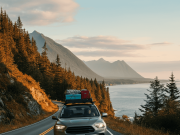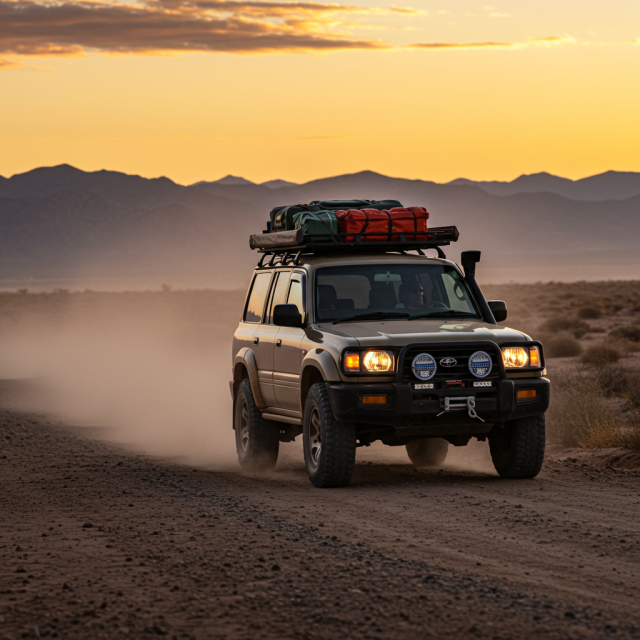Overlanding combines off-road exploration, self-reliance, and a passion for discovery. Unlike traditional road trips or camping vacations, overlanding involves traveling long distances by vehicle, often across borders and through challenging terrain. This comprehensive guide will walk you through everything you need to know—from planning and vehicle selection to packing essential gear, plotting routes, and choosing top destinations. Whether you’re a seasoned adventurer or new to overlanding, you’ll find tips to turn your dream journey into reality.
What is Overlanding?
At its core, overlanding is self-reliant travel by land, usually in a four-wheel-drive vehicle equipped with camping gear. The emphasis is on the journey rather than a single destination. Pioneered by early explorers and modern-day nomads, overlanding can range from weekend escapes to multi-week expeditions spanning continents. The appeal lies in the freedom to set your own pace, camp in remote locations, and immerse yourself fully in the landscape and local cultures you encounter along the way.
Planning Your Overlanding Trip

Effective planning lays the groundwork for a successful overland adventure. Start by researching visa requirements, border crossings, and permit fees for each country you’ll pass through. Identify seasonal weather patterns—such as monsoon rains or winter snow—to choose an optimal travel window. Draft a flexible itinerary with daily distance goals, rest days, and contingency plans. Budget for fuel, vehicle maintenance, and unexpected expenses. Finally, connect with overlanding forums and local online communities to gather real-time tips on road conditions and safety advisories.
Choosing the Right Vehicle
Selecting a reliable, capable vehicle is critical. SUVs, trucks, and custom-built 4x4s are popular choices. Look for vehicles with high ground clearance, robust suspension, and a modern four-wheel-drive system. Diesel engines often deliver better fuel economy and torque for hauling heavy loads and tackling steep grades. Invest in skid plates to protect the undercarriage, upgraded tires for off-road traction, and roof racks or drawer systems for organized storage. Always perform a thorough mechanical inspection before departure.
Essential Gear and Equipment

Packing the right gear can make or break your overlanding experience. Must-have items include:
- Recovery tools (winch, tow straps, shovel) for self-recovery
- High-quality rooftop tent or ground tent with a weatherproof footprint
- Portable stove, cooking utensils, and lightweight cookware
- Water filtration system and extra fuel and water jerry cans
- Navigation tools (GPS device, paper maps, compass)
- Comprehensive toolkit and spare parts (belts, hoses, filters)
- First aid kit with wilderness supplies
- Fuel-efficient LED lighting and auxiliary batteries or solar panels
Safety and Legal Considerations
Prioritize safety by sharing your travel plans with friends or family and checking in regularly. Carry copies of important documents—passport, driver’s license, vehicle registration—and secure digital backups. Familiarize yourself with the driving laws and speed limits in each country. If possible, invest in satellite communication devices for areas without cellular coverage. Stay informed about local political situations and avoid regions with travel advisories. Always respect wildlife and environmental regulations to protect fragile ecosystems.
Route Planning and Navigation
Combining digital and traditional navigation methods ensures reliability. Use mapping apps like Gaia GPS or Maps.me to download offline maps. Plan your main route points, but remain flexible to detours and scenic side trips. Mark fuel stations, water sources, campsites, and emergency services along the way. Physical paper maps and a reliable compass serve as backups if electronics fail. Keep track of mileage and your vehicle’s consumption rate to avoid running out of fuel in remote stretches.
In some overland-friendly regions—especially across Europe and parts of Asia—you may want to incorporate train travel into your planning for certain legs of the journey. Trains can help bypass politically sensitive areas or regions with vehicle restrictions, and they offer a chance to rest while still covering ground. Some overlanders even ship their vehicles by rail for part of the route, combining overlanding with rail convenience when needed.
Budgeting for Your Journey
Overlanding can be cost-effective, but expenses add up. Create a detailed budget that covers:
- Fuel and vehicle maintenance costs
- Visa, permit, and border-crossing fees
- Camping or park entrance fees
- Food supplies and dining out
- Emergency funds for repairs or medical costs
Monitor spending daily and adjust your itinerary if you’re approaching budget limits. Many overlanders save by cooking meals at campsites and camping in free or low-cost areas.
Camp Setup and Overlanding Etiquette
Choose campsites that minimize environmental impact and respect private property. Adhere to Leave No Trace principles—pack out all trash, avoid damaging vegetation, and use biodegradable soap. When camping near communities, ask permission if the land isn’t designated public space. Keep noise levels down, especially at night. Sharing resources and offering help to fellow overlanders fosters a supportive community ethos.
Top Overlanding Destinations
Some of the most iconic overlanding routes include:
- Pan-American Highway, spanning Alaska to Argentina
- Sahara Desert crossings in North Africa
- Australia’s Outback trek from Alice Springs to the coast
- The Silk Road corridor through Central Asia
- The Trans-Siberian Route across Russia
Each route offers unique challenges: desert dunes, high-altitude passes, and remote wilderness. Research each destination thoroughly and adapt your gear and timing accordingly.
Tips for Solo vs. Group Overlanding
Solo overlanding offers solitude, a personal challenge, and ultimate flexibility, but comes with greater risks. You’ll need strong self-recovery skills and reliable communication gear. Group travel provides shared costs, multiple skill sets, and extra safety in numbers, but requires consensus on routes and camping styles. Whichever you choose, establish clear rules for navigation, daily driving distances, and responsibilities for cooking, maintenance, and navigation tasks.
Conclusion
Overlanding is more than just a trip; it’s an immersive journey that tests your skills, deepens your connection with nature, and broadens cultural horizons. By carefully planning, selecting the right vehicle, packing essential gear, and staying flexible, you can create unforgettable adventures across continents. Hit the road, embrace the unknown, and discover the world one mile at a time.
Learn more about: Travel Tech Toolkit: Essential Apps and Gadgets for the Modern Explorer














